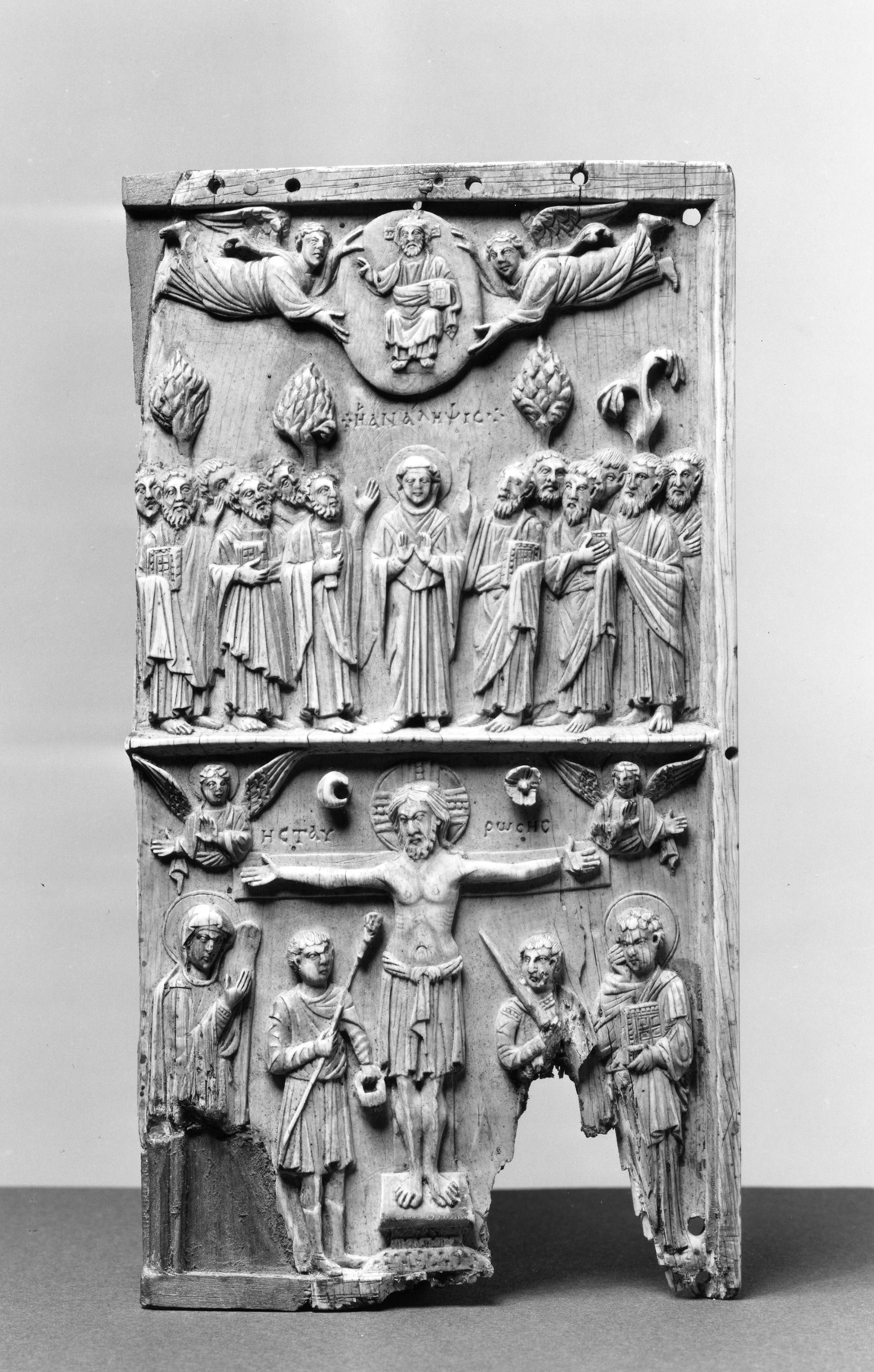Crucifixion and Ascension
(Byzantium and Early Russia)
This two-panel ivory relief carving depicts the Crucifixion and Ascension of Christ. In the Crucifixion, the sun and moon and Stephaton and Longinus are reversed from their usual positions. Longinus carries a sword rather than a spear. The style is related to the Nicephoros Group. The figures in the ascension stand upright, looking upwards towards Christ, who sits in a mandorla carried by two angels. The bottom border and parts of figures in the Crucifixion scene are broken off, as are the left border and upper left corner. There are several pinholes in the upper border and ground. "AVE MARIA" has been scratched on the back and there is the impression of a seventeenth-century seal.
Inscription
Provenance
Provenance (from the French provenir, 'to come from/forth') is the chronology of the ownership, custody, or location of a historical object.
Bastini Collection; Count Gregoire Stroganoff (Grigorii Sergeevich Stroganov), Rome, prior to 1900, by purchase [his cat. 117]; Henri Daguerre, Paris [date of acquisition unknown], by purchase; Henry Walters, Baltimore, 1920, by purchase; Walters Art Museum, 1931, by bequest.
Exhibitions
| 2011 | Cross References. Dumbarton Oaks, Washington. |
| 1947 | Early Christian and Byzantine Art. Baltimore Museum of Art, Baltimore. |
Geographies
Turkey, Istanbul (Constantinople) (Place of Origin)
Measurements
H: 9 5/16 x W: 4 15/16 x D: 5/16 in. (23.65 x 12.5 x 0.8 cm)
Credit Line
Acquired by Henry Walters, 1920
Location in Museum
Not on view
Accession Number
In libraries, galleries, museums, and archives, an accession number is a unique identifier assigned to each object in the collection.
In libraries, galleries, museums, and archives, an accession number is a unique identifier assigned to each object in the collection.
71.294


